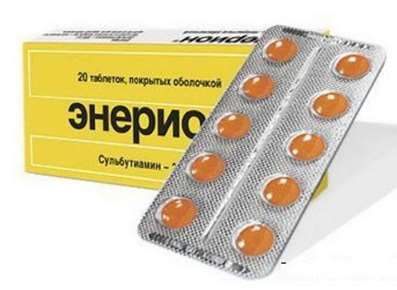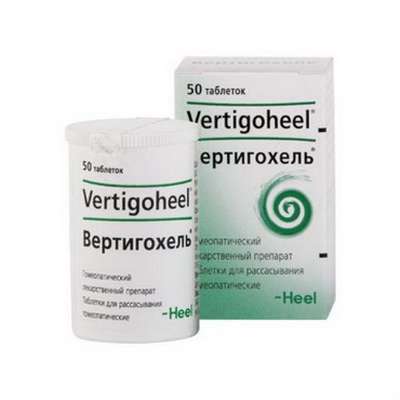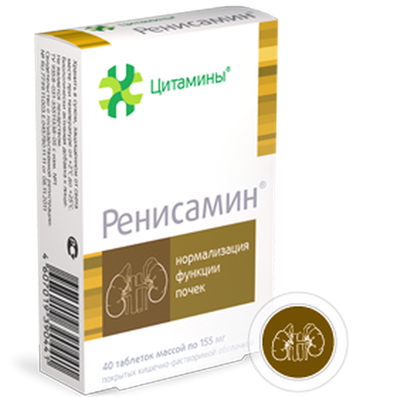Regulation of Hormone Secretion
03 Apr 2017
One of the most important areas of the central nervous system, coordinating and controlling the functions of the endocrine glands, is the hypothalamus, where the neurosecretory nuclei and centers that participate in the regulation of the synthesis and secretion of the hormones of the adenohypophysis are localized. Hypothalamus is a region of the brain located between the cross of the optic nerves, the visual tract, the inner edge of the brain stem and papillae.
The hypothalamic groove running from the Sylvian aqueduct to the Monroeus opening separates the hypothalamus from the visual hillock. In the hypothalamus, three large zones are distinguished: periventricular, medial and lateral. In turn, each zone consists of several cores. Thus, in the periventricular zone one region and six nuclei are distinguished: the preoptic periventricular region, the anterior periventricular nucleus, the suprachiasmatic nucleus, the dorsomedial nucleus, the tubular magnocellular nucleus, the arcuate or arcuate nucleus (sometimes called the infundibular nucleus), the paraventricular periventricular nucleus.
In the middle zone of the hypothalamus, the medial preoptic region, the medial preoptic nucleus, the anterior hypothalamic region, the paraventricular nucleus, the ventromedial nucleus, the periphonal nucleus, the posterior hypothalamic region and the medial mamillary (papillary) core are distinguished. The lateral zone includes the lateral preoptic region, the lateral hypothalamic region and the supraoptic nucleus.
Experimental studies with the deactivation (destruction) of individual structures of the hypothalamus and the breakdown of its neural connections with other parts of the brain made it possible to establish that the nervous control of the anterior lobe of the pituitary gland is accomplished by two mechanisms (regulation levels).
The first level of regulation is realized by the so-called hypophysitropic region of the hypothalamus, which controls the initial (basal) secretion of the anterior lobe of the pituitary gland and neurohypophysis secretion. The second, higher level is provided by other hypothalamic and extrahypothalamic areas of the brain (hippocampus, anterior thalamus, middle brain, etc.) that participate in stimulation or inhibition of pituitary function.
The extrahypothalamic structures of the brain carry out an important neuroendocrine control of the pituitary gland and are responsible for the daily rhythm of hormone secretion. The middle brain, the hippocampus and the anteromedial thalamic nucleus are involved in the regulation of the secretion of ACTH, gonadotropins, prolactin, growth hormone. In addition, ascending afferent and direct connections from the reticular formation and the midbrain are projected into the hypothalamus, where dopaminergic and other cells secreting various monoamines are localized.
The hypothalamus has a rich network of blood vessels that form a portal system in the mid-elevation region. The most highly vascularized supraoptic and paraventricular nuclei. Histologically, the region of the middle elevation represents the contact zone containing the endings of numerous neurons localized in the listed hypothalamic nuclei, through which the secretion products of these neurons (hypophysotropic hormones) reach the capillaries of the portal (portal) pituitary system. Venous capillaries of the portal system have special openings (shunts), which make it possible to transfer compounds with sufficient molecular mass from the blood to the perivascular space of the medial elevation.
The hypothalamus, therefore, is the region that transforms information coming through the nerve pathways from the overlying parts of the nervous system, by changing the level of neurotransmitters (neurotransmitters), which include various monoamines: epinephrine, norepinephrine, dopamine, serotonin, acetylcholine, g-aminobutyric acid. Stressful situations and other factors lead to a change in the content, rate of synthesis and release of monoamines in the hypothalamus, which in turn change the rate of secretion of hypothalamic and hypophysotropic hormones, which leads to a corresponding change in the functional activity of the anterior lobe of the pituitary gland.
It is believed that neurotransmitters (monoamines) regulate the pituitary gland by several mechanisms: a) participation in the synaptic transmission of information coming from the limbic system of the brain to a neuron that produces hypophysitropic hormones (peptides); B) action on the membrane of the hypothalamic neuron and the process of releasing the pituitary hormone; C) a change in the functional activity of the axon of the hypothalamic neuron in the region of the capillaries of the portal (portal) pituitary system with the modification of hypophysitropic hormone transport into the blood; D) the influence on the cells of the anterior lobe of the pituitary gland with increasing or suppressing their secretory activity or modifying their response to the action of hypophysitropic hormones.
Thus, the hypothalamus is the place where the nerve and endocrine cells interact with each other, carrying out a fast and highly efficient transmission of information necessary for a quick response from the body, systems and the body as a whole with the purpose of providing vital activity to the body. The transfer of information from cell to cell is carried out by chemical messengers (hormones and monoamines) and electrical activity. Intercellular interactions, as recent studies have shown, can be accomplished by the following mechanisms: synaptic messenger transfer; Hormonal mechanism through circulating hormones; Paracrine mechanism, i.e. Without the hormone entering the blood, but only into the intercellular fluid; Autocrine mechanism, i.e. The release of the hormone from the cell into the intercellular fluid and the interaction of this hormone with the membrane receptors located on the same cell. It has been shown that norepinephrine, somatostatin, dopamine, gonadoliberin, oxytocin, vasopressin can act as hormones and be secreted by endocrine cells or neurons, and also found in synapses of nerve cells and act as neurotransmitters. Another group of hormones - glucagon, enkephalins, cholecystokinin, proiopiomelanocortin derivatives are secreted by endocrine cells, performing a hormonal function, and, being localized in the nerve endings, have a neurotransmitter effect. And these two properties are revealed in other hormones of the adenohypophysis. Tyroliberin and VIP are secreted by neurons, but they perform a hormonal function, and in the nerve endings they have an obvious neurotransmitter effect. You can also like Phenotropil.
The effect of the central nervous system on the hypothalamus is not only performed by the above-mentioned nervous mechanisms, but also by the transport of cerebrospinal fluid to various hormones, neurotransmitters and other substances (endorphins, enkephalins, substance P), which are produced in various areas of the central nervous system and the epiphysis. In the epiphysis, melatonin and a number of other indoles and polypeptides, modulating the function of the adrenals, thyroid and gonadal glands, are formed. Hormones of the epiphysis are released into the cerebrospinal fluid or the total blood flow and act in various ways. So, melatonin concentrates in the hypothalamus and the middle brain and affects the secretion of hypophysitropic hormones, changing the content of monoamines and neurotransmitters. Other epiphysis polypeptides act directly on the formation of hypophysotropic peptides.
It should be noted that, in addition to neurotransmitters, the mechanisms of the release of hypophysitropic hormones take the obligatory participation of the ions K + and Ca2 +, prostaglandins, cAMP and other substances.
The principle of feedback in the regulation of hormones:
Domestic scientist M.M. Zavadovsky, studying the patterns in the regulation of endocrine glands, first formulated the "plus-minus interaction" principle in 1933, which later became known as the "feedback principle".
By feedback is meant a system in which the end product of the activity of this system (for example, a hormone, a neurotransmitter and other substances) modifies or modifies the function of the components constituting the system aimed at changing the amount of the end product (hormone) or the activity of the system. Vital activity of the whole organism is a consequence of the functioning of numerous self-regulating systems (excretory, cardiovascular, digestive, respiratory, etc.), which in turn are controlled by the neuroendocrine-immune system.
All of the above represents, therefore, a complex of various self-regulating systems that are to a certain extent dependent and "subordinate". The end result or activity of the system can be modified in two ways, namely by stimulation to increase the amount of the final product (hormone) or enhance the activity of the effect, or by inhibiting the system to reduce the amount of the final product or activity. The first way of modifying is called positive, and the second - negative feedback.
An example of positive feedback is an increase in the level of the hormone in the blood that stimulates the release of another hormone (an increase in the level of estradiol in the blood causes LH release in the pituitary gland), and negative feedback when an elevated level of one hormone inhibits the secretion and release of the other (increasing the concentration of thyroid hormones in the blood Reduces the secretion of TSH in the pituitary gland). Hypothalamic-pituitary regulation is performed by mechanisms functioning on the principle of feedback, in which distinct levels of interaction are clearly distinguished.
By "long" feedback chain, it is understood that the peripheral endocrine gland interacts with the pituitary and hypothalamic centers (it is not excluded that with the suprahypothalamic and other areas of the central nervous system) by affecting the indicated centers of the changing concentration of hormones in the circulating blood. A "short" feedback loop is understood as such an interaction, when an increase in the pituitary tropic hormone (for example, ACTH) modulates and modifies the secretion and release of the pituitary hormone (in this case, corticoliberin).
The "ultrashort" feedback loop is a kind of interaction within the hypothalamus, when the release of one pituitary hormone affects the secretion and release of another pituitary hormone. This kind of feedback takes place in any endocrine gland. Thus, the release of oxytocin or vasopressin through the axons of these neurons and through intercellular interactions (from cell to cell) modifies the activity of neurons that produce these hormones. Another example, the release of prolactin and its diffusion into the intervascular spaces leads to an effect on neighboring lactotrophs, followed by inhibition of prolactin secretion.
The "long" and "short" feedback circuits function as systems of a "closed" type, i.e. Are self-regulating systems. However, they respond to internal and external signals, changing for a short time the principle of self-regulation (for example, under stress, etc.). Along with this, these systems are influenced by mechanisms that support the biological circadian rhythm associated with the change of day and night. Circadian rhythm is a component of the system that regulates the body's homeostasis and allows it to adapt to changing environmental conditions. Information about the rhythm of day-night is transmitted to the central nervous system from the retina of the eye to the suprachiasmatic nuclei, which together with the epiphysis form the central circadian mechanism - "biological clock". In addition to the mechanism of day-night, in the activities of these "hours" are involved other regulators.
Suprachiasmatic nuclei have an integrating role in maintaining biological rhythms. About 80% of the cells of the suprachiasmatic nuclei are excited by the action of acetylcholine. Attempts to change the rhythm of the activity of nuclei by the infusion of large amounts of serotonin, dopamine, tiroliberin, substance P, glycine or g-aminobutyric acid proved to be ineffective. However, some hormones (vasopressin, gonadoliberin, substance P) have been found in this area, which undoubtedly somehow participate in the mechanisms of maintaining biological rhythms.
The secretion of many hormones (ACTH, STG, glucocorticoids, etc.) is subject to significant fluctuations throughout the day. In Fig. 3 shows the daily rhythm of STH secretion. The study of circadian hormone secretion is of great clinical importance, since in some diseases (acromegaly, Itenko-Cushing's disease), the violation of the daily rhythm of hormone secretion is an important differential diagnostic feature that is used in the differentiation of syndromically similar pathology.

 Cart
Cart





